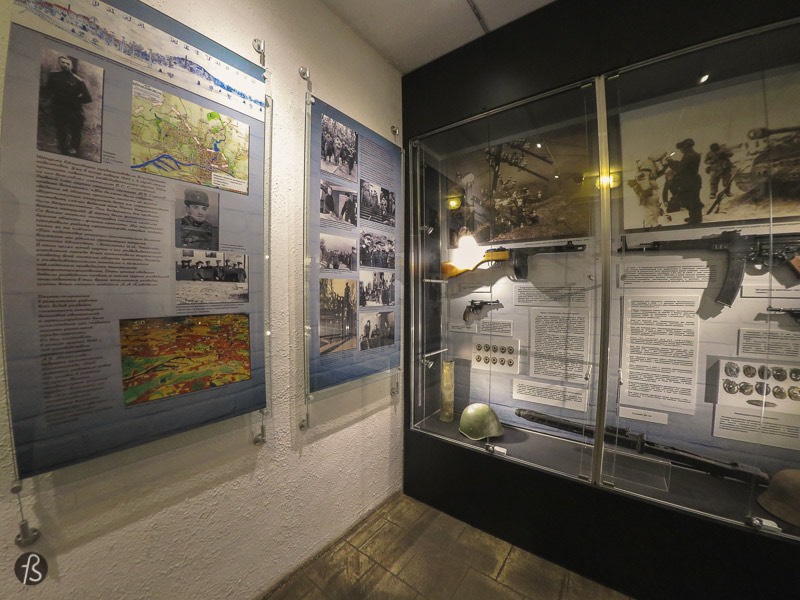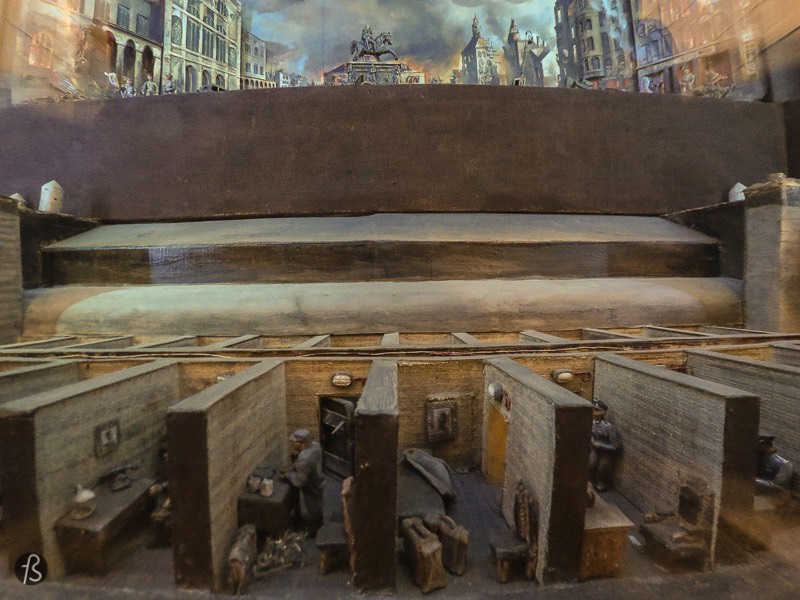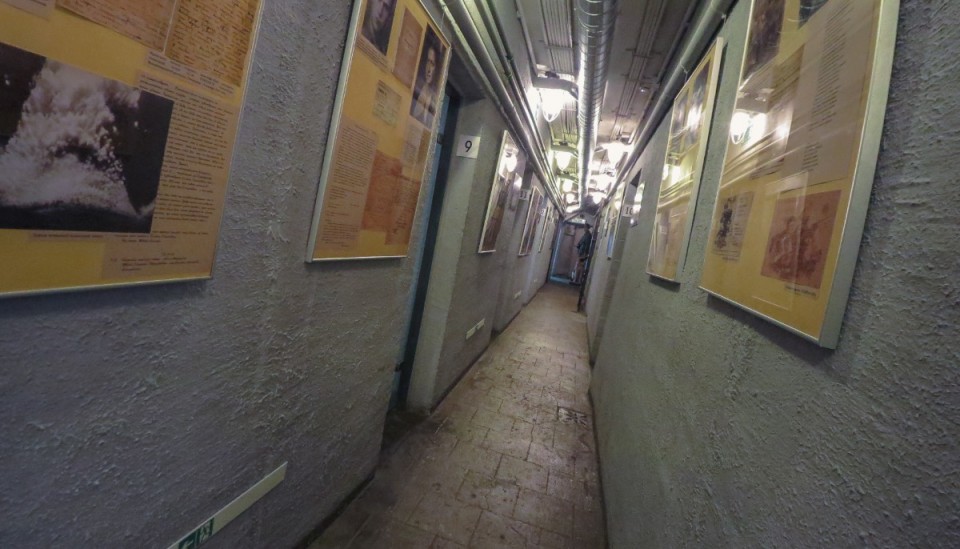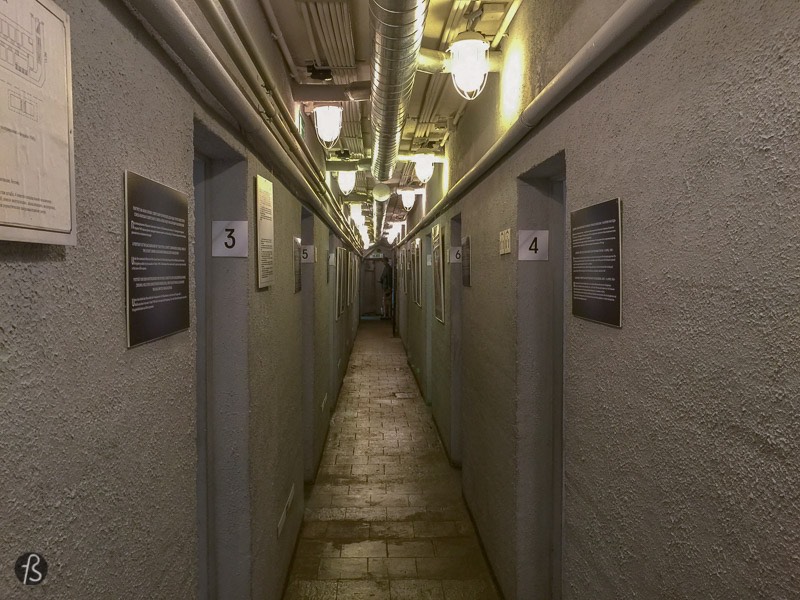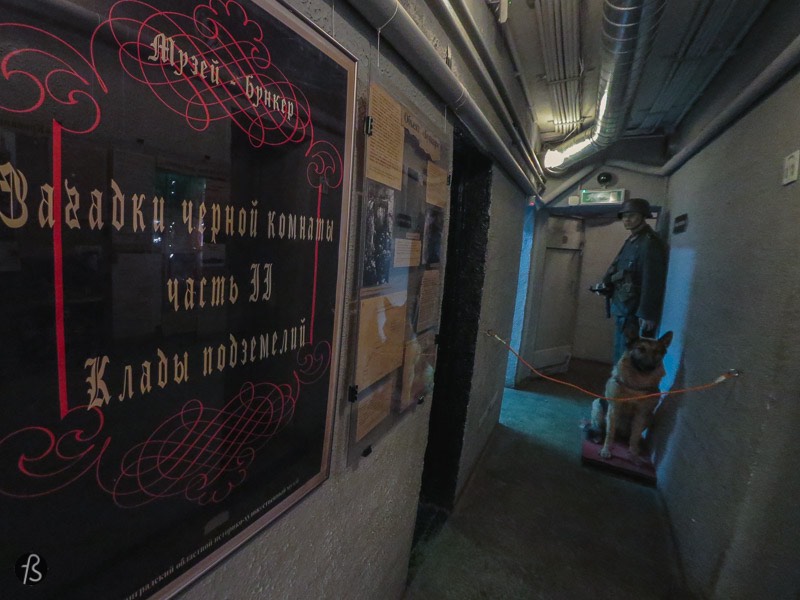The Bunker Museum in Kaliningrad is, technically, called the Blindage Museum, and it tells the history of the last days of the Second World War. These are the last days of Königsberg and inside you can see how the city fell to Soviet Forces.
<div class=”aligncenter”><!– Go to www.addthis.com/dashboard to customize your tools –> <div class=”addthis_native_toolbox”></div></div>
I was in Kaliningrad in October 2017 and, during my research, the Bunker Museum showed up as one of the most exciting places in the city when it comes to the documenting what happened to the town when it was the capital of East Prussia. I knew I would have to visit it!
Inside the Bunker Museum
It was in March 1945 that German general Otto Lasch ordered the digging and construction of a 7 meters deep command bunker. The bunker would be located not far from the smoldering ruins of Königsberg Castle but, today, there stands the House of Soviets. The city was already surrounded by the Soviet forces, but the battle for Königsberg was far from over.
The construction was done by slave labor, and it took a few weeks for it to be over. The one-storied underground concrete bunker was built 7 meters deep and it 42 meters long and 15 meters wide. There are 21 rooms inside the shelter, and it was the headquarters of the German command during the last days of the Second World War. It was here that General Otto Lasch signed the Act of Capitulation and surrendered the city to the Red Army.
Inside the Bunker Museum, you can see the atmosphere of those last days of the Second World War. Dioramas are showing the destruction of Königsberg, and it’s easy to spot key buildings around the city. Some of them still stand today, some of them didn’t survive the battle.
There are recreations of how the German army surrendered, with models representing General Otto Lasch and his army looking down in sorrow. There are maps of the assault on the city and eyewitness reports about the fighting. There was even a film showing the battle and describing the fight for the city.
One of the most exciting elements of the bunker for me was the bunker’s gate that is made of thick steel wire and is covered in runic symbols. Supposedly, they were meant to give some magical defense to the German forces inside it. But it seems like it didn’t work since they lost the war and the city.
Since the bunker was built in the last days of the war, it survived everything mostly undamaged. This is why, back in 1967, it was open to the public as a museum.
The only downside of the Bunker Museum is the fact that everything inside is in Russian only. Even buying the tickets to go in were a little bit complicated since nobody seemed to understand some of my questions. Either way, if you know some of the histories from Königsberg in the Second World War, you will realize most of the museum. If you don’t, it might be cool to explore the bunker and see how Nazi German dug a hole to hide from the Red Army storming the city.
The Bunker Museum can be found in front of the Kaliningrad State University, a few minutes walking from the Victory Square. The area around the museum is purely residential, and it was kind of hard for me to find where the museum was. Keeps your eyes open and try to find a small anti-aircraft gun and you will find yourself in the right place.
The Bunker Museum is open every day of the week, except Monday, from 10 to 18. The entrance fee is something around 100 rubles, which means about €2.

The Bunker Museum in Kaliningrad aka the Blindage Museum
Universitetskaya Str., 2 a,
Kaliningrad
If you like what you read here, you should join us on our facebook group, follow us on Facebook and Twitter and, maybe, even our Flipboard Magazine. Or even, subscribe to our newsletter!
<!– Go to www.addthis.com/dashboard to customize your tools –><br /><br /><!– –><div class=”addthis_recommended_horizontal”></div>
